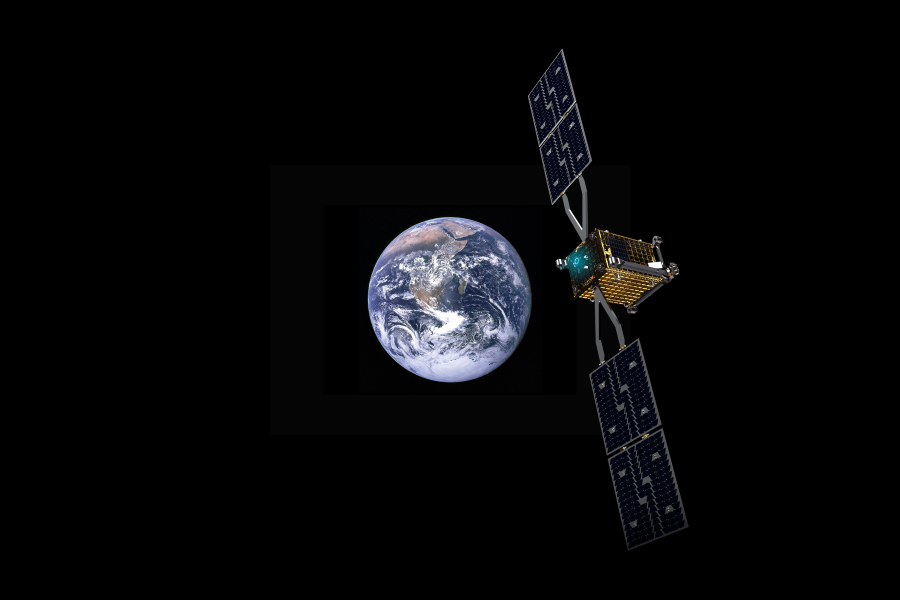The Space Force is contracting with startup Starfish Space to build and launch a spacecraft that can dock with and maneuver aging satellites in geosynchronous orbit, a “first-of-its-kind” effort to embrace space mobility and logistics.
A Starfish spokesperson told Air & Space Forces Magazine the goal is to launch one of its Otter spacecraft by 2026. The company has not yet chosen a launch partner, the spokesperson added.
Otter is designed to rendezvous and dock with satellites that were never designed or configured for docking, and to then use its own propulsion system to maneuver the larger spacecraft. Meeting with reporters this January, program executive officer for Assured Access to Space Brig. Gen. Kristin L. Panzenhagen referred to such a capability as a “backpack or a jetpack,” but the term used in a Space Systems Command press release is “augmented maneuver.”
If successful, Otter and other augmented maneuver systems would contribute to what the Space Force calls dynamic space operations, in which satellites can be more rapidly and readily moved from one orbit to another, without worrying that doing so might cost the satellite its available fuel and shorten its expected lifespan.
Satellites were not traditionally built to be refueld or serviced in flight. But as launch costs have declined, the Space Force and commercial ventures have begun to rethink the idea. Space Rapid Capabilities Office director Kelly D. Hammett has said his organization is no longer building satellites that cannot be refueled, and SSC has started certifying refueling interfaces.
However, the Space Force still has dozens of existing satellites that were built without interfaces and cannot be directly refueled. Officials have stressed that the threat to these capabilities is urgent. Starfish hopes to provide “affordable options for servicing existing and new assets without additional requirements,” it said in a statement.
Otter employs a proprietary docking system that the company says can mate with virtually any flat surface, enabling the spacecraft to dock and then release satellites at will.
“This project is another step forward in delivering what our warfighters require in sustained space maneuver,” said Col. Joyce Bulson, director of servicing, mobility, and logistics within the Assured Access to Space directorate. “For a particular class of spacecraft with a particular mission set in GEO, refueling may be the answer to sustaining maneuver; for other systems, augmented maneuver options may be the solution.”
Details such as what satellites Otter will move or the concept of operations are not being made public yet, Starfish noted in its release, but the company says it will “improve resilience, tactical responsiveness, and strategic flexibility.” In its release, the Space Force said Otter would provide two years of service.
Bulson also noted in her statement that Otter could theoretically help Space Force satellites with “station-keeping or life extension, orbital transfer, and ultimately, orbital disposal.”
The contract, announced May 20, is a strategic funding increase after the Space Force previously gave Starfish a Small Business Innovative Research (SBIR) II contract. Under the terms of the deal, the Space Force will contribute $37.5 million and venture capital investment will add another $30 million.
Starfish will continue to own and operate the Otter satellite, providing its capabilities as a service. In its recent Commercial Space Strategy, the Space Force listed “space access, mobility, and logistics” as one of the top areas where officials will look to leverage commercial options instead of building their own capabilities.
